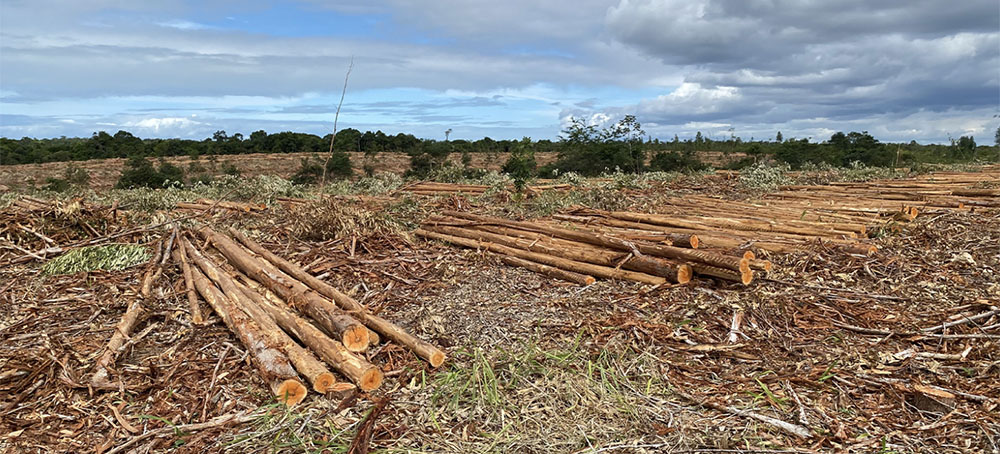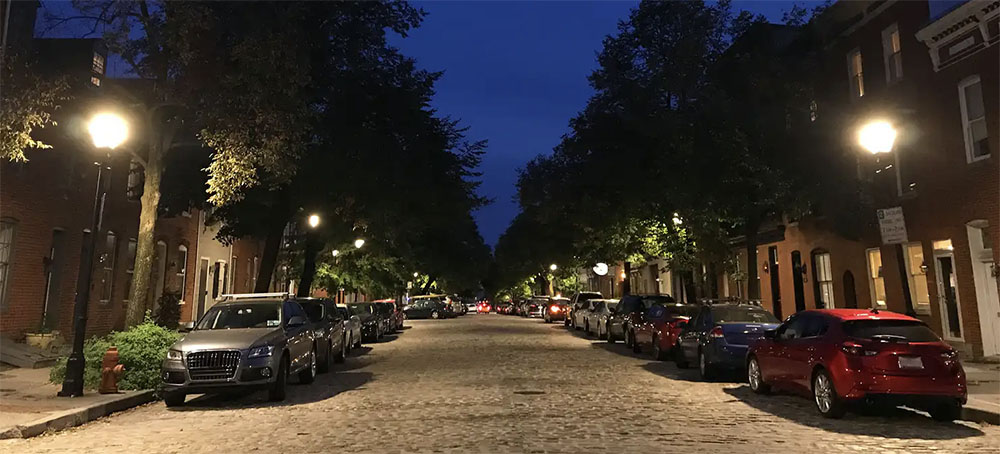Live on the homepage now!
Reader Supported News
“I’ve never had a chance to explain my position on this subject without interruption, and to a large audience,” says the poet Allen Ginsberg about the myths, the lore, and the legal aspects of marijuana. “So people mistakenly think I'm asking people to take dope-fiend dope.” A longer version of this article by the author of HOWL and other poems (his collected works will be published early next year by Grove) will appear in THE MARIHUANA PAPERS, a group of essays being published this month by Bobbs-Merrill.
A few people don’t like the experience and report back to the language world that it’s a drag. But the vast majority all over the world who have smoked the several breaths necessary to feel the effect, adjust to the strangely familiar sensation of Time slow-down, and explore this new space thru natural curiosity, report that it’s a useful area of mind-consciousness to be familiar with. Marijuana is a metaphysical herb less habituating than tobacco, whose smoke is no more disruptive than Insight.
This essay, conceived by a mature middle-aged gentleman, the holder at present of a Guggenheim Fellowship for creative writing, a traveler on many continents with experience of customs and modes of different cultures, is dedicated to those who have not smoked marijuana, who don’t know exactly what it is but have been influenced by sloppy, or secondhand, or unscientific, or (as in the case of drug-control bureaucracies) definitely self-interested language used to describe the marijuana high pejoratively. I offer the pleasant suggestion that a negative approach to the whole issue (as presently obtains in what are aptly called square circles in the USA) is not necessarily the best, and that it is time to shift to a more positive attitude toward this specific experience. (1) If one is not inclined to have the experience oneself, this is a free country and no one is obliged to have an experience merely because friends, family, or business acquaintances have had it and report themselves pleased. On the other hand, an equal respect and courtesy are required for the sensibilities of one’s familiars for whom the experience has not been closed off by the door of Choice.
The black cloud of negative propaganda on marijuana emanates from one particular Source: the US Treas. Dept. Narcotics Bureau. (2) If the tendency (a return to common sense) to leave the opiate problem with qualified M.D.’s prevails, the main function of this large Bureau will shift to the persecution of marijuana. Otherwise, the Bureau will have no function except as a minor tax office, for which it was originally purposed, under aegis of Secty. of Treasury. Following Parkinson’s Law that a bureaucracy will attempt to find work for itself, or following a simpler line of thought, that the agents of this Bureau have a business interest in perpetuating the idea of a marijuana “menace” lest they lose their employment, it is not unreasonable to suppose that a great deal of the violence, hysteria & energy of the anti-marijuana language propaganda emanating from this source has as its motive a rather obnoxious self interest, all the more objectionable for its tone of moralistic evangelism. This hypocrisy is recognizable to anybody who has firsthand experience of the so-called narcotic; which, as the reader may have noticed, I have termed an herb, which it is—a leaf or blossom—in order to switch from negative terminology and inaccurate language.
A marvelous project for a sociologist, and one which I am sure will be in preparation before my generation grows old, will be a close examination of the actual history and tactics of the Narcotics Bureau and its former chief Power, Harry J. Anslinger, in planting the seed of the marijuana “menace” in the public mind and carefully nurturing its growth over the last few decades until the unsuspecting public was forced to accept an outright lie. (3)
I must begin by explaining something that I have already said in public for many years: that I occasionally use marijuana in preference to alcohol, and have for several decades. I say occasionally and mean it quite literally; I have spent about as many hours high as I have spent in movie theaters—sometimes three hours a week, sometimes twelve or twenty or more, as at a film festival—with about the same degree of alteration of my normal awareness.
I therefore do know the subjective possibilities of marijuana and therein take evidence of my own senses between my own awareness of the mysterious ghastly universe of joy, pain, discovery, birth & death, the emptiness & awesomeness of its forms and consciousness described in the Prajnaparamita Sutra central to a Buddhist or even Christian or Hindu view of Kosmos which I sometimes experience while high, as for the last two paragraphs, and the cheap abstract inexperienced version of exactly the same thing one may have read in the newspapers, written by reporters (who smoke pot themselves occasionally nowadays) taking the main part of their poorly written squibs of misinformation from the texts & mouths of Chiefs of Narcotics Bureaus, Municipal or Federal—or an occasional doctor notorious in the profession for his ungracious stupidity & insulting manners.
What was this criminal vision of marijuana presented by the Narcotics Department for years in cheap sex magazines and government reports? Who invented the myths of base paranoia close to murder, frothing at the mouth of Egyptian dogs, sex orgies in cheap dives, debilitation and terror and physiological or mysterious psychic addiction? An essentially grotesque Image, a thought-hallucination magnified myriad thru mass media, a byproduct of Fear—something quite fiendish—“Dope Fiend,” the old language, a language abandoned in the early sixties when enough of the general public had sufficient personal experience to reject such palpable poppycock (4) & the bureaucratic line shifted to defense of its own existence with the following reason: necessary to control marijuana because smoking leads to search for thrill kicks; this leads to next step, the monster Heroin. And a terrible fate.
In historical context this recent excuse for repression of marijuana seems to the author so irrational that it is impossible to disprove. Yet public confusion may warrant some precise analysis: A) There are no legitimate sociological/medical study documents warranting the Narcotics Department’s assertion of causal relation between use of marijuana and graduation to opiates. B) There never had been any hint of such association before the two classes of drugs were forcibly juxtaposed in black market by said department; Anslinger testified to that in 1937. C) A greater percent of opiate users started with bananas, cigarettes & alcohol than started with marijuana—no causal relationship is indicated in any case. D) The number of millions of respectable Americans who smoke marijuana have obviously not proceeded on to opiates. E) In test sociological cases, i.e., societies such as Morocco and India where marijuana use is universal, there is very small use of opiates, and no social association or juxtaposition between the two classes of drugs. What juxtaposition there is in America has been created and encouraged by the propaganda and police repression tactics of the Narcotics Bureau. (Pharmacological Basis of Therapeutics 1965, and 1965 California Atty. General’s Report both characterize the claimed causal relationship as “unproved.”)
In sound good health I smoked legal ganja (as marijuana is termed in India, where it is traditionally used in preference to alcohol), bought from government tax shops in Calcutta, in a circle of devotees, yogis, and hymn-singing pious Shaivite worshipers in the burning ground at Nimtallah Ghat in Calcutta, where it was the custom of these respected gentlemen to meet on Tues. and Saturday nights, smoke before an improvised altar of blossoms, sacramental milk-candy & perhaps a fire taken from the burning wooden bed on which lay a newly dead body, of some friend perhaps, likely a stranger if a corpse is a stranger, pass out the candy as God’s gift to friend and stranger, and sing holy songs all night, with great strength and emotion, addressed to different images of the Divine Spirit. Ganja was there considered a beginning of sadhana (Yogic path or discipline) by some; others consider the Ascetic Yogi Shiva Himself to have smoked marijuana; on His birthday marijuana is mixed as a paste with almond milk by the grandmothers of pious families and imbibed as a sacrament by this polytheistic nation, considered by some a holy society. The professors of English at Benares University brought me a bottle for the traditional night of Shivaratri, birthday of the Creator & Destroyer who is the patron god of this oldest continuously inhabited city on Earth. “BOM BOM MAHADEV!” (Boom Boom Great God!) is the Mantra Yogis’ cry as they raise the ganja pipe to their brows before inhaling.
All India is familiar with ganja, and so is all Africa, and so is all the Arab world; and so were Paris and London in smaller measure in high-minded but respectable nineteenth-century circles; and so on a larger scale is America even now. Young and old, millions perhaps, smoke marijuana and see no harm. And we have not measured the Latin-American world, Mexico particularly, which gave the local herb its familiar name. In some respects we may then see its prohibition as an arbitrary cultural taboo.
There has been a tendency toward its suppression in the Arab world with the too hasty adoption of Western rationality & the enlarged activity of the American fanatic Mr. Anslinger, retired from the Narcotics Bureau but now US representative to the UN World Health Organization Narcotic Drugs Commission, a position from which he circulates hysterical notices and warnings manufactured in Washington’s Treas. Dept. to the police forces of the cities of the world—so I was told by a police official in Tel Aviv, an old school chum who laughed about the latest release, a grim warning against the dangers of Khat, a traditional energizing leaf chewed by Bedouins of Arabia & businessmen & princes in Ethiopia, as well as a few traditional Yemenite Jews.
Professor Alfred R. Lindesmith in The Addict and the Law (Indiana University Press) has already objected in public print to the Department’s manipulation and attempted quashing of various medical-juridic reports; the impartial LaGuardia Report of 1944 was rudely attacked by Anslinger; a President’s Judicial Advisory Council Policy Statement (1964) has characterized the activities of the Bureau as exceeding legal rightfulness in “criminalizing” by executive fiat & administrative dictum those addicted to addicting drugs who for decades have been prevented from going to a doctor for treatment unless it was under the aegis of Lexington Jail, and thru police channels. Memory of the British East India Hemp Commission report, the largest in history, done in the 1890s, which concluded that marijuana was not a problem, has been ignored; (5) & memories of our own Panama Canal military reports giving marijuana a clean bill of health have been unavailing in consideration of the Bureau; (6) thousands of intelligent citizens have been put in prison for uncounted years for possession or sale of marijuana, even if they grew it themselves and only smoked in private; youths have been entrapped into selling small or large quantities of the grass to police agents and consequently found themselves faced with all the venomous bullshit that an arbitrary law can create, from the terrors of arrest to the horror of years in jail; the author receives letters of complaint and appeals for help, from many US cities, from acquaintances, fellow litterateurs, even scholarly investigators of the subject writing books about it, as well as from one energetic poet founding a fine project for an Artist’s Workshop (John Sinclair in Detroit, sentenced to six months for letting an agent buy marijuana for the second time); Ken Kesey, the novelist, is now in exile; 21,931 arrests for marijuana from 1963 to 1965 reported from California alone, according to Prof. Alfred R. Lindesmith. The whole scene is so shrouded in bureaucratic mystery that there are no national figures available anywhere.
One becomes awed by the enormity of the imposition. It is not a healthy activity for the State to be annoying so many of its citizens thusly; it creates a climate of topsy-turvy law and begets disrespect for the law and the society that tolerates execution of such barbarous law, (7) and a climate of fear and hatred for the administrators of the law. Such a law is a threat to the existence of the State itself, for it sickens and debilitates its most adventurous and sensitive citizens. Such a law, in fact, can drive people mad.
It is no wonder then that most people who have smoked marijuana in America often experience a state of anxiety, of threat, of paranoia, in fact, which may lead to trembling or hysteria, at the microscopic awareness that they are breaking a Law, that thousands of Investigators are trained and paid to smoke them out and jail them, that thousands of their community are in jail, that inevitably a few friends are “busted” with all the hypocrisy and expense and anxiety of that trial & perhaps punishment—jail and victimage by the bureaucracy that made, propagandized, administers, and profits from such a monstrous law.
From my own experience and the experience of others I have concluded that most of the horrific effects and disorders described as characteristic of marijuana “intoxication” by the US Federal Treasury Department’s Bureau of Narcotics are, quite the reverse, precisely traceable back to the effects on consciousness not of the narcotic but of the law and the threatening activities of the US Federal Treasury Department Bureau of Narcotics itself. Thus, as the Buddha said to a lady who offered him a curse, the gift is returned to the giver when it is not accepted.
I myself experience this form of paranoia when I smoke marijuana, and for that reason smoke it in America more rarely than I did in countries where it is legal. I noticed a profound difference of effect. The anxiety was directly traceable to fear of being apprehended and treated as a deviant criminal; put thru the hassle of social disapproval, ignominious Kafkian tremblings in vast court buildings coming to be judged, the helplessness of being overwhelmed by force or threat of deadly force and put in brick & iron cell.
This apprehension deepened when on returning this year from Europe, I was stopped, stripped, and searched at customs. The dust of my pockets was examined with magnifying glass for traces of weed. I had publicly spoken in defense of marijuana and attacked the conduct of the Bureau, and now my name was down on a letter/dossier at which I secretly peeked, on the Customs search-room desk. I quote the first sentence, referring to myself and Orlovsky: “These persons are reported to be smuggling (or importing) narcotics....”
On a later occasion, when I was advised by several friends and near acquaintances that Federal Narcotics personnel in NYC had asked them to “set me up” for an arrest, I became incensed enough to write a letter of complaint to my congressman. He replied that he thought I was being humorless about the reason for my being on a list for Customs investigation, since it was natural (I had talked about the dread subject so much in public); anyway, not Kafkian as I characterized it. As for my complaint about being set up—that, with my letter, was forwarded to the Treasury Dept. in Washington for consideration and reply. Thus, the reply received December 22, 1965: “I would advise you that I have been in touch with the Bureau of Narcotics and am of the opinion that nothing has been done in your case that is illegal or inconsistent with law enforcement practices designed to enforce the narcotics laws.” In this case it was police request to arrested friends that they carry marijuana to my apartment and to that of the novelist William S. Burroughs.
Rather than radically alter the preceding composition written in 1965—let it remain for the reader who has not smoked marijuana a manifestation of marijuana-high thought structure in a mode which intersects our mutual consciousness, namely language—I wish to add here a few thoughts.
I have spent half a year in Morocco, smoking kif often: old gentlemen & peaceable youths sit amiably, in cafes or under shade trees in outdoor gardens, drinking mint tea, passing the tiny kif pipe, and looking quietly at the sea. This is the true picture of the use of kif in North Africa, exactly the opposite of the lurid stereotype of mad-dog human beings deliberately spread by our Treasury Department police branch. And I set this model of tranquil sensibility beside the tableau of aggravated New York executives sipping whiskey before a 1965 TV set’s imagery of drunken American violence covering the world from the highways to Berkeley all the way to the dirt roads of Vietnam.
No one has yet remarked that the suppression of Negro rights, culture, and sensibility in America has been complicated by the marijuana laws. African sects have used pot for divine worship (much as I have described its sacred use in India). And to the extent that jazz has been an adaptation of an African religious form to American context, marijuana has been closely associated with the development of this indigenous American form of chant & prayer. Use of marijuana has always been widespread among the Negro population in this country, and suppression of its use, with constant friction and bludgeoning of the Law, has been a major unconscious, or unmentionable, method of assault on negro Person.
Although most scientific authors who present their reputable evidence for the harmlessness of marijuana make no claim for its surprising usefulness, I do make that claim:
Marijuana is a useful catalyst for specific optical and aural aesthetic perceptions. I apprehended the structure of certain pieces of jazz & classical music in a new manner under the influence of marijuana, and these apprehensions have remained valid in years of normal consciousness. I first discovered how to see Klee’s Magic Squares as the painter intended them (as optically three-dimensional space structures) while high on marijuana. I perceived (“dug”) for the first time Cezanne’s “petit sensation” of space achieved on a two-dimensional canvas (by means of advancing & receding colors, organization of triangles, cubes, etc. as the painter describes in his letters) while looking at The Bathers high on marijuana. And I saw anew many of nature’s panoramas & landscapes that I’d stared at blindly without even noticing before; thru the use of marijuana, awe & detail were made conscious. These perceptions are permanent—any deep aesthetic experience leaves a trace, & an idea of what to look for that can be checked back later. I developed a taste for Crivelli’s symmetry; and saw Rembrandt’s Polish Rider as a sublime Youth on a Deathly horse for the first time—saw myself in the rider’s face, one might say—while walking around the Frick Museum high on pot. These are not “hallucinations”; these are deepened perceptions that one might have catalyzed not by pot but by some other natural event (as natural as pot) that changes the mind, such as an intense Love, a death in the family, a sudden clear dusk after rain, or the sight of the neon spectral reality of Times Square one sometimes has after leaving a strange movie. So it’s all natural.
At this point it should be revealed for those unaware that most of the major (best and most famous, too) poets, painters, musicians, cineasts, sculptors, actors, singers & publishers in America and England have been smoking marijuana for years and years. I have gotten high with the majority of the dozens of contributors to the Don Allen Anthology of New American Poetry 1940-1960; and in years subsequent to its publication have sat down to coffee and a marijuana cigarette with not a few of the more academic poets of the rival Hall-Pack-Simpson anthology. No art opening in Paris, London, New York, or Wichita at which one may not sniff the incense fumes of marijuana issuing from the ladies’ room. Up and down Madison Avenue it is charming old inside knowledge; and in the clacketing vast city rooms of newspapers on both coasts, copyboys and reporters smoke somewhat less marijuana than they take tranquilizers or Benzedrine, but pot begins to rival liquor as a nonmedicinal delight in conversation. Already eight years ago I smoked marijuana with a couple of Narcotics Department plainclothesmen who were trustworthy enough to invite to a literary reception. A full-page paid advertisement in the New York Times, quoting authoritative medical evidence of the harmlessness of marijuana, and signed by a thousand of its most famous smokers, would once and for all break the cultural ice and end once and for all the tyranny of the Treasury Department Narcotics Bureau. For it would only manifest in public what everybody sane in the centers of communication in America knows anyway, an enormous open secret—that it is time to end Prohibition again. And with it put an end to the gangsterism, police mania, hypocrisy, anxiety, and national stupidity generated by administrative abuse of the Marijuana Tax Act of 1937.
It should be understood, I believe, that in this area we have been undergoing police-state conditions in America, with characteristic mass brainwashing of the public, persecution & jail, elaborate systems of plainclothes police and police spies and stool pigeons, abuse of constitutional guarantees of privacy of home and person from improper search and seizure. The police prohibition of marijuana (accompanied with the even more obnoxious persecution of sick heroin addicts who all along should have been seeing the doctor) has directly created vast black markets, crime syndicates, crime waves in the cities, and a breakdown of law and order in the State itself. For the courts of large cities are clogged with so-called narcotic crimes and behind schedule, and new laws (such as the recent NY Rockefeller Stop & Frisk & No-Knock) spring up against the citizen to cope with the massive unpopularity of prohibition.
Not only do I propose end of prohibition of marijuana but I propose a total dismantling of the whole cancerous bureaucracy that has perpetrated this historic screw-up on the United States. And not only is it necessary that the Bureau of Narcotics be dismantled & consigned to the wax museum of history, where it belongs, but it is also about time that a full-scale congressional investigation with all the resources of the embattled medical, legal & sociological authorities, who for years have been complaining in vain, should be undertaken to fix the precise responsibility for this vast swindle on the administrative & mass-media shoulders where it belongs. What was the motive & method in perpetrating this insane hoax on public consciousness? Have any laws of malfeasance in public office been violated?
Not only an investigation of how it all happened but some positive remuneration is required for those poor citizens who have been defenseless against beatings, arrest, and anxiety for years —a minority directly & physically persecuted by the police of cities and states and by agents of the nation; a minority often railroaded to jail by uncomprehending judges for months, for years, for decades; a minority battling idiotic laws, and even then without adequate legal representation for the slim trickery available to the rich to evade such laws. For the inoffensive charming smokers of marijuana who have undergone disgraceful jailings, money is due as compensation. This goes back decades for thousands of people, who, I claim, are among the most sensitive citizens of the nation; and their social place and special honor of character should be rewarded by a society which urgently needs this kind of sensibility where it can be seen in public.
I have long felt that there were political implications to the suppression of marijuana, beyond the obvious revelation (which Burroughs pointed out in Naked Lunch) of the cancerous nature of the marijuana-suppression bureaucracy. When the citizens of this country see that such an old-time, taken-for-granted, flag-waving, reactionary truism of police, press, and law as the “reefer menace” is in fact a creepy hoax, a scarecrow, what will they begin to think of the whole of taken-for-granted public REALITY?
What of other issues filled with the same threatening hysteria? The specter of Communism? Respect for the police and courts? Respect for the Treasury Department? If marijuana is a hoax, what is Money? What is the War in Vietnam? What are the Mass Media?
As I declared at the beginning of this essay, marijuana consciousness shifts attention from stereotyped verbal symbols to “more direct, slower, absorbing, occasionally microscopically minute engagement with sensing phenomena” during the high. Already millions of people have gotten high and looked at the images of their Presidents and governors and representatives on television and seen that all were betraying signs of false character. Or heard the impersonal robot tones of audio newscasters announcing mass deaths in Asia.
It is no wonder that for years the great centers of puritanism of consciousness, blackout & persecution of the subtle vibrations of personal consciousness catalyzed by marijuana have been precisely Moscow and Washington, the centers of the human power war. Fanatical rigid mentality pursuing abstract ideological obsessions make decisions in the right-wing mind of America, pursuing hateful war against a mirror-image of the same “sectarian, dogmatic” ideological mentality in the Communist camp. It is part of the same pattern that both centers of power have the most rigid laws against marijuana. And that marijuana and versions of the African ritual music (folk-rock) are slowly catalyzing anti-ideological consciousness of the new generations on both sides of the Iron Time curtain.
I believe that future generations will have to rely on new faculties of awareness, rather than on the versions of old idea-systems, to cope with the increasing godlike complexity of our planetary civilization, with its overpopulation, its threat of atomic annihilation, its centralized network of abstract word-image communication, its power to leave the earth. A new consciousness, or new awareness, will evolve to meet a changed ecological environment. It has already begun evolving in younger generations from Prague to Calcutta; part of the process is a re-examination of certain heretofore discarded “primitive” devices of communication with Self and Selves. Negro worship rituals have invaded the West via New Orleans and Liverpool in altered but still recognizably functional form. The odd perceptions of Zen, Tibetan Yoga, Mantra Yoga, & indigenous American peyotism and shamanism affect the consciousness of a universal generation, children who can recognize each other by hairstyle, tone of voice, attitude to nature and attitude to Civilization. The airwaves are filled with songs of hitherto unheard-of frankness and beauty.
These then are some of the political or social applications of the public legitimization of marijuana as a catalyst to self-awareness.
A LITTLE ANTHOLOGY OF MARIJUANA FOOTNOTES
Footnote 1:
The English Journal of Medicine, The Lancet, Editorial, November 9, 1963. “At most of the recent references the question was raised whether the marijuana problem might be abolished by removing the substance from the list of dangerous drugs where it was placed in 1951, and giving it the same social status as alcohol by legalizing its import and consumption.
“This suggestion is worth considering. Besides the undoubted attraction of reducing, for once, the number of crimes that a member of our society can commit, and of allowing the wider spread of something that can give pleasure, a greater revenue would certainly come to the State from taxation than from fines. Additional gains might be the reduction of interracial tension, as well as that between generations; for ‘pot’ spread from South America to Britain via the United States and the West Indies. Here it has been taken up by the younger members of a society in which alcohol is the inheritance of the more elderly.”
Footnote 2:
Anslinger, Harry J., and Oursler, W. C.: The Murderers (New York: Farrar, Straus & Cudahy, 1961), p. 38.
“As the Marijuana situation grew worse, I knew action had to be taken to get proper control legislation passed. By 1937, under my direction, the Bureau launched two important steps: First, a legislative plan to seek from congress a new law that would place Marijuana and its distribution directly under federal control. Second, on radio and at major forums, such as that presented annually by the the New York Herald Tribune, I told the story of this evil weed of the fields and river beds and roadsides. I wrote articles for magazines; our agents gave hundreds of lectures to parents, educators, social and civic leaders. In network broadcasts I reported on the growing list of crimes, including murder and rape. I described the nature of Marijuana and its close kinship to hashish. I continued to hammer at the facts.
“I believe we did a thorough job, for the public was alerted, and the laws to protect them were passed, both nationally and at the state level.”
Footnote 3:
“Traffic in Opium and Other Dangerous Drugs,” Report by the Government of the United States of America for the Year Ended December 31st, 1938, by Hon. H. J. Anslinger, Commissioner of Narcotics, p. 7.
“The Narcotics Section recognizes the great danger of marihuana due to its definite impairment of the mentality and the fact that its continuous use leads direct to the insane asylum.”
Footnote 4:
The Pharmacological Basis of Therapeutics, Goodman and Gillman, 1956 ed., pp. 170-177: “There are no lasting ill effects from the acute use of marihuana, and fatalities have not been known to occur.... Careful and complete medical and neuropsychiatric examinations of habitues reveal no pathological conditions or disorders of cerebral functions attributable to the drug.... Although habituation occurs, psychic dependence is not as prominent or compelling as in the case of morphine, alcohol, or perhaps even tobacco habituation.”
Footnote 5:
Report of the British East India Hemp Commission, 1893-94, Ch. XIII, pp. 263-264 (Summary of Conclusions regarding effects).
“The Commission has now examined all the evidence before them regarding the effects attributed to hemp drugs.... In regard to the physical effects, the Commission have come to the conclusion that the moderate use of hemp drugs is practically attended by no evil results at all. There may be exceptional cases in which, owing to idiosyncracies of constitution, the drugs in even moderate use may be injurious. There is probably nothing the use of which may not possibly be injurious in cases of exceptional intolerance....
“In respect to the alleged mental effects of the drugs, the Commission have come to the conclusion that the moderate use of hemp drugs produces no injurious effects on the mind....
“In regard to the moral effects of the drugs, the Commission are of the opinion that their moderate use produces no moral injury whatever ... for all practical purposes it may be laid down that there is little or no connection between the use of hemp drugs and crime.
“Viewing the subject generally, it may be added that the moderate use of these drugs is the rule, and that the excessive use is comparatively exceptional.”
Footnote 6:
Panama Canal Zone Governor’s Committee, April-December, 1925 (The Military Surgeon, Journal of the Association of Military Surgeons of the United States, November, 1933, p. 274).
“After an investigation extending from April 1 to December 1925, the Committee reached the following conclusions: There is no evidence that marihuana as grown here is a ‘habit-forming’ drug in the sense in which the term is applied to alcohol, opium, cocaine, etc., or that it has any appreciably deleterious influence on the individual using it.”
Footnote 7:
Proceedings, White House Conference on Narcotic and Drug Abuse, September, 1962, State Department Auditorium, Washington, D. C., p. 266: “It is the opinion of the Panel that the hazards of Marijuana per se have been exaggerated and that long criminal sentences imposed on an occasional user or possessor of the drug are in poor social perspective. Although Marijuana has long held the reputation of inciting individuals to commit sexual offenses and other antisocial acts, the evidence is inadequate to substantiate this. Tolerance and physical dependence do not develop and withdrawal does not produce an abstinence syndrome.”
James H. Fox, Ph.D., Director, Bureau of Drug Abuse Control, Food and Drug Administration: Statement August 24, 1966, before National Student Association Subcommittee on Drugs and the Campus. NSA Convention, Urbana, Illinois; Quoted Champaign News-Gazette August 25, 1966.
“My studies have led me to essentially the same conclusion as Mr. Ginsberg’s. I think we can now say that marijuana does not lead to degeneration, does not affect the brain cells, is not habit-forming, and does not lead to heroin addiction. I would say that there may very well be some modification in government attitudes towards marijuana.”
The Marijuana Problem in the City of New York, by the Mayor’s Committee on Marihuana: The Sociological Study, Intro. by Dudley D. Schoenfeld, M.D. Reprinted in The Marihuana Papers. Bobbs-Merrill, New York, 1966.
“Conclusions:
7. The practice of smoking marihuana does not lead to addiction in the medical sense of the word.
9. The use of marihuana does not lead to morphine or heroin or cocaine addiction, and no effort is made to create a market for these narcotics by stimulating the practice of marihuana smoking.
10. Marihuana is not the determining factor in the commission of major crimes.
13. The publicity concerning the catastrophic effects of marihuana smoking in New York City is unfounded.”
Ibid.: Intellectual Functioning, Florence Halpern, MA
“Conclusions:
6. Indulgence in marihuana does not appear to result in mental deterioration."
Ibid.: Addiction and Tolerance
“The evidence available then -- the absence of any compelling urge to use the drug, the absence of any distressing abstinence symptoms, the Statements that no increase in dosage is required to repeat the desired effect in users -- justifies the conclusion that neither true addiction nor tolerance is found in marihuana users. The continuation and the frequency of usage of marihuana, as in the case of many other habit-forming substances, depend on the easily controlled desires for its pleasurable effects.”
Ibid. Summary by George B. Wallace, M.D., Chairman
“From the study as a whole, it is concluded that marihuana is not a drug of addiction, comparable to morphine, and that if tolerance is acquired, this is of very limited degree. Furthermore those who have been smoking marihuana for a period of years showed no mental or physical deterioration which may be attributed to the drug.
No evidence was found of an acquired tolerance for the drug.
The sensations desired are pleasurable ones -- a feeling of contentment, inner satisfaction, free play of imagination. Once this stage is reached, the experienced user realizes that with further smoking the pleasurable sensations will be changed to unpleasant ones, and so takes care to avoid this.”
Follow us on facebook and twitter!
PO Box 2043 / Citrus Heights, CA 95611











